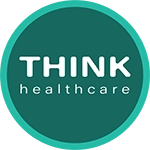Challenges to GP access in the UK
The biggest challenge is that more patients want more appointments with less GPs available. There has been a 16% increase in the number of patients per full-time GP in the past seven years. NHS England figures have also shown that appointments are up from 310 million between August 2018 to July 2019 to 345 million between August 2021 to July 2022.1 That’s an 11% rise in appointments at a time when NHS leaders are still asking for improved patient access!
Meanwhile, the number of full qualified full-time GPs is falling despite increased recruitment for trainees. The British Medical Association (BMA) says the NHS lost 428 GP partners and 149 salaried, locum and retainer GPs in the year after April 2022. Back in February 2020, the Government launched a recruitment drive to secure an extra 6,000 GPs for 2024, but the BMA’s findings do not show a positive upturn in GP numbers.
Coupled with the stress of a recent pandemic and ageing technology, including the traditional GP surgery phone system, the overall challenge facing GP partners and practice managers should not be underestimated.
Increase in appointments
GP-patient access is understandably measured in appointments, whether they are in person or on the phone or via video. The 35 million increase in appointments is staggering and clearly puts added stress on surgeries that are trying to manage staff and patient access.
Even before the pandemic, we were seeing a rise in the use of telephone appointments or triage conversations to manage the workload. The number of GP appointments conducted over the phone rose from 3.2 million in February 2019 compared to 8.8 million in February 2022, according to statistics from NHS Digital.2
This data included calls made by GPs from Babylon Health and its GP at Hand service, which was already beginning to make waves in general practice before the pandemic with their remote approach. However, NHS Digital said their calls only accounted for 50,000 more appointments.
Video and online appointments also rose but only by 16,000. Face-to-face was down by 3.4 million. But put those figures together and you still see an overall rise of 2.2 million appointments in between the two Februarys in 2019 and 2022. Whichever statistics you use as your measuring stick, it is clear general practice is under pressure.
Lower numbers of fully qualified staff
As the BMA’s data reveals, more GPs are leaving the profession. Not only that, GPs that used to work full-time are now opting to go part-time to give them a better work-life balance and help alleviate some of the stress and ill health caused by longer hours. This affects figures collated by the BMA as they look at both headcount and the number of full-time equivalent (FTE) GPs that works 37.5 hours a week.
Although there were 36,467 fully qualified GPs working in the NHS in England as of April 2023, this actually equated to 27,231 FTE GPs. The number of FTE GPs has been steadily decreasing since 2017 with the BMA’s findings revealing that two in five plan to work more flexibly and from home more.
A growing population with increasing accessibility needs
As GP numbers decline, the number of appointments and patient population is increasing. A record-high of more than 62.4 million patients were registered with a GP surgery in April 2023. This means the average number of patients per FTE GP is now 2,292. According to the BMA, that represents an 18.3% increase since 2015.
But what about the most vulnerable patients? The King’s Fund estimates 15 million people3 in England have a long-term condition or chronic disease. These patient account for about 50% of all GP appointments. With our population ageing, the number of people with long-term conditions is expected to rise, along with those with complex care needs. The Queen’s Nursing Institute estimates the number of people with complex care needs, as in those with three or more long-term conditions, is at three million4.
What do the challenges mean for GP phone systems?
All the facts and figures are probably already well-known to stretched and stressed GP partners and practice managers. This is what they have been trying to grapple with in the last few years, but it is only recently that the link between GP surgery phone systems and NHS access has been officially publicised with Government funding promised to help surgeries using older technology.
The sheer number of patients means more calls coming in at the same time which leads to them being met by the busy tone or, where available, joining a lengthy queue. With phone lines tied up by incoming calls, GPs have struggled to make outgoing calls for telephone appointments. In short, traditional phone systems lack the required call capacity but also a whole host of intelligent features that ease access for patients and make life easier for frontline staff.
We already appreciate that there is a need for GPs to be able to provide continuity of care to those patients who need it most, but older phone systems hinder this effort by not even giving them a fair chance to make initial contact.
How does cloud telephony overcome these challenges?
The Government, NHS England and subsequent bodies in Scotland and Wales have all recognised that the future of general practice telephony is the cloud-hosted phone system to make it easier for patients to get in touch with their GP surgeries.
A legacy GP surgery phone system would have comprised of handsets connected to one communications server and a limited by the number of phone lines. If a surgery only had two, four or eight lines, that would equate to the number of concurrent incoming and outgoing calls the surgery could handle.
Cloud-hosted advanced phone systems come with a line per handset or user licence to increase call capacity. This immediately limits the number of patients being met by the busy tone and therefore improves patient access.
Priority patient access for vulnerable patients
There is more that can be done, however. Think Healthcare offers a clever feature whereby vulnerable patients can be given priority access and automatically bypass any call queues or automated attendant menus.
Practice managers can identify these patients using the integration with their existing clinical systems, so any incoming calls from this group of patients are put straight through to a receptionist who will be alerted to their vulnerable status and will be able to access their notes with ease to remind themselves of any ongoing concerns their GP may have.
Vulnerable patients may be on the palliative care list, very elderly, have learning disabilities, going through cancer treatment, have complex health issues or are living in poverty. The GP surgery can identify these to ensure the most vulnerable do not miss out on the care they need.
How does this support the QOF framework?
The Quality and Outcomes Framework (QOF) rewards GP surgeries for the provision of ‘quality care’. A more recent QOF indicator has been introduced to reduce avoidable appointments, with the aim of ensuring the most vulnerable patients are prioritised. Worth 15 points, this equates to around £3,250 of funding to the average sized GP surgery.
However, to achieve this QOF requirement, practice managers need to evaluate their current patient activity before they can start to reduce avoidable appointments. To do this, they are being advised to collate call queuing statistics to understand their peaks of activity so they can match their capacity to demand.
Not only can cloud-hosted telephony system increase call capacity but also provides easy access to statistics that will illustrate the current patient demand situation while also proving the work involved to reduce avoidable appointments.
Connecting patients and practices
It’s our aim to help securely connect patients and practices using the Think Healthcare solution. Patient access was key to the development of our product, and we have already received favourable feedback from patient participation groups, practice managers and GPs alike. As an NHS-focused telephony solution, patients were always our main concern and I am delighted to see Think Healthcare’s features meet new NHS and QOF standards.
Footnote:

